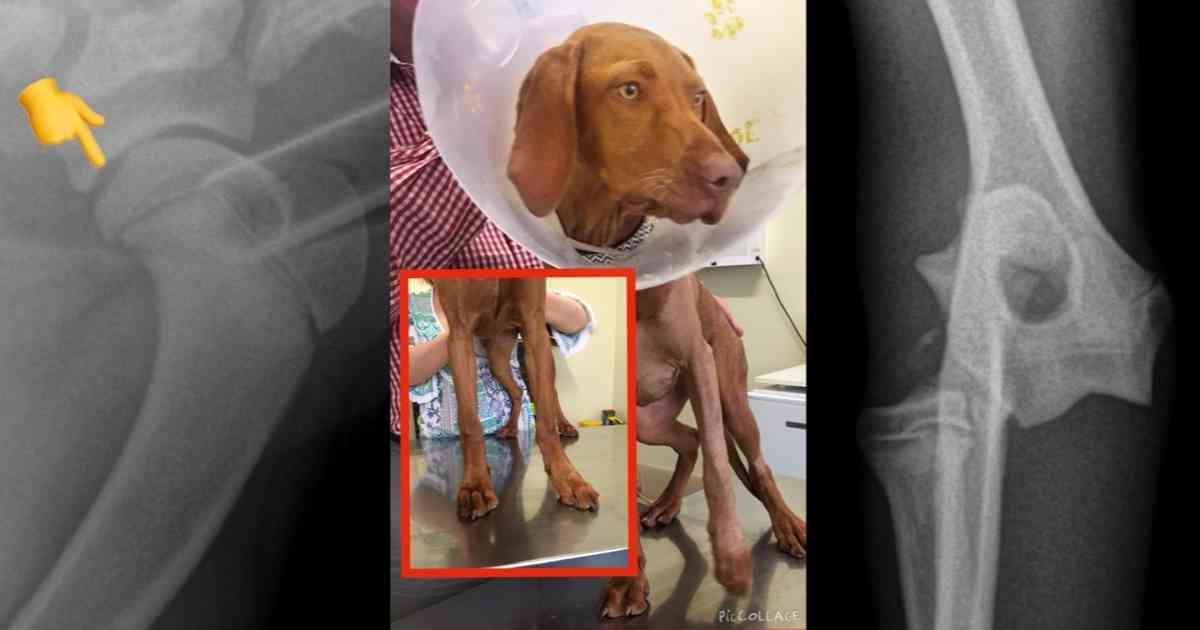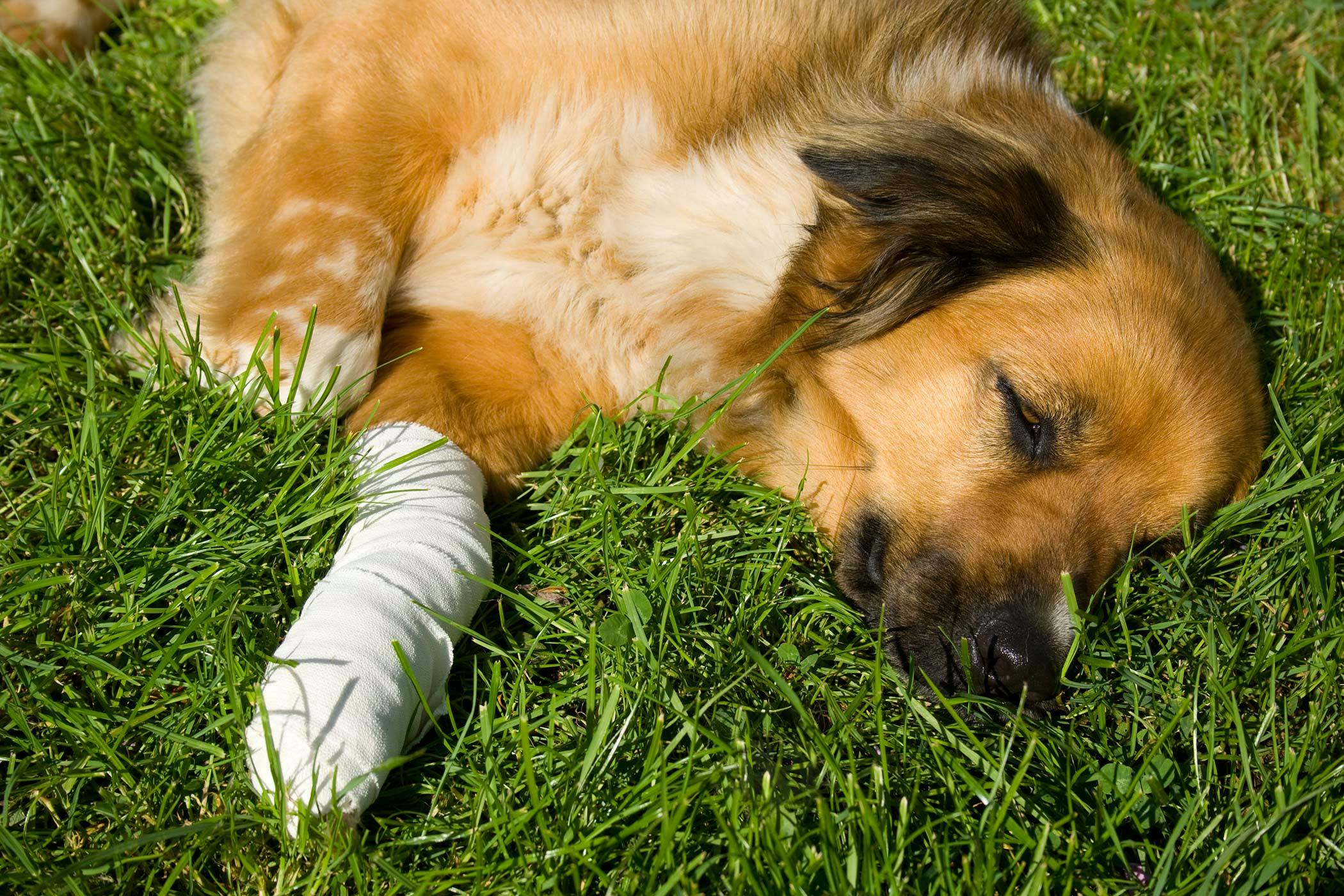
If your pup has not yet been seen by a vet it may be a good idea due to the number of symptoms your puppy is experiencing. The first and usually the most recognizable sign of an ankle sprain is limping on the affected rear leg.

It is best to get your pet evaluated by a vet who can do a lameness exam to localize where the problem is on the leg.
Puppy seems to have sprained upper leg. Signs and Diagnosis of a Dog Sprained Leg. Lameness is usually the first sign of a dog sprained leg this indicates your dog is in pain. If the leg becomes warm or hot however its unlikely that the limping is due to a simple sprain.
If the sprain goes unaddressed lameness may continue and over time leg muscles may weaken. A sprained leg could be due to major trauma or injury such as getting hit by a car. Dogs can also sprain their legs fighting with other dogs wrestling with their humans or just playing jumping and being their typically active selves.
Some dogs have even sprained their leg merely by stepping into a hole or jumping off the couch. Your dog may also avoid placing his leg on the ground completely if at all. Your dog may also lick the affected leg.
Swelling of the area may also be noted. A sprain may also affect your dogs behaviour. You may notice a decreased appetite diminished activity decreased interest in exercise or play all in the hopes of lessening further injury to a painful leg.
A dog leg sprain is a commonly occurring injury. When a joint is suddenly moved in a sharp manner it can cause tearing or stretching of the surrounding ligaments. This can take place in any of the front or rear legs of the dog.
Canine leg sprains usually occur during rough play or when the dog walks on slippery icy or muddy ground. To treat a sprain on a dog start by taking your dog to the vet to rule out anything more serious like a broken bone or dislocation. Then apply an ice pack wrapped in a towel to the sprained area for 15 minute intervals several times a day to reduce swelling and pain.
If your dog has a pulled leg muscle or a dog leg sprain you will notice him limping or refusing to put weight on his leg. The leg hip or stifle might appear swollen tender and inflamed. If your dog has pulled a neck or back muscle youll see stiffness instability while walking changes in posture and pain when touched or moved.
One of the most noticeable signs that a dog has a sprain or strain is if your dog is limping they cant use their leg as normal or if they appear to be lame all of a sudden. If this persists for more than a day or if it keeps on coming back then a trip to the vet would be in order. This injury could be a bruised muscle and this will respond well to aspirin at 5 mg per pound of Riders weight given every 12 hrs for 7-10 days.
This is the only safe over the counter pain med for dogs. If he does not respond to this after a few days have your vet examine him to be sure he did not rupture his ACLanterior cruciate ligament. To reduce the swelling if there is any take an elastic bandage and wrap it around the dogs leg.
Make sure not to tighten it too much so. My 6 year old Pomeranian 15 poundstall and long legs appears to have twisted or sprained his shoulder. He puts weight on it but walks with a limp.
Sometimes he doesnt put weight on it and sits. The veterinarian will then require an X-Ray to further determine the type of injury and what treatment is needed. The X-Ray can cost between 150-400.
If the injury is minor ie. A sprain or fracture then a simple splint may do the trick. The splint cost depends on the size of the dog usually between 100-300.
If there is discoloration or bruising on the leg of your pet it may be a sign that a muscle was pulled. If you have a dog with thick fur you may have to brush the coat away to check their skin under the fur to check for bruising. However if the tear is only minimal these signs may not be noticeable even if the dog is in pain.
Limping can mean a lot of different things including a muscle sprain or a ligament injury. It also depends on which leg is affected and exactly where the injury is on the limb. It is best to get your pet evaluated by a vet who can do a lameness exam to localize where the problem is on the leg.
The first and usually the most recognizable sign of an ankle sprain is limping on the affected rear leg. A dog with a sprain will often try not to put weight on the affected leg. Depending on the severity the dog may carry the leg in a raised position not using it at all.
Be aware of other common reasons for rear leg lameness. Spinning dog My recently adopted boxer mix 3 months old has been suffering from a respiratory illness that causes her to be very congestedShes being treated with Clavamox and seems to be improvingShe still has some congestion and a slight coughA few days ago she began to turn circles when she walksShe has no fever and seems to be improving otherwiseShe doesnt. 6 lbs Chi pup left leg sprain but she is constipated and refusing to eat.
Only eats a few bits here and there. If your pup has not yet been seen by a vet it may be a good idea due to the number of symptoms your puppy is experiencing. Leg sprains can be painful and the pain may be causing nausea or a refusal.
In most cases a sprain is easily treated with wrapping the ankle and plenty of rest. But its important to visit your Vet to rule out more serious injury. Other Common Conditions Affecting a Dogs Rear Legs.
Solutions for Your Dogs Rear Leg Injury. As a response animals yes even the household dog or cat do not show you how much they hurt. If you notice your dog limping look at the leg foot knee shoulder etc.
If you dont see anything and the limping is not horrible wait a few days to see if. There are other causes that make a dogs legs swell without injuries and these include joint disease bone disease infections allergies and immune diseases. SprainsJoint Dislocations as the Cause of Dogs Leg Swelling.
Various types of falls and poor position of the wrist or paw when running or digging the ground cause traumatic injuries. Such traumas in dogs are the most. If your dog has a history of broken legs or had a surgery then theres a chance the limping is a result of the scar tissue.
If the dogs leg was bandaged properly and a surgery was carried out it could result in scar tissue. Also the bone may have fixed in a. Next manipulate the joints on the leg starting with the toes and working all the way up to the hip joint.
Use the dogs opposite unswollen leg as a baseline to compare the normal range of movement against that of the injured leg. If you notice any loud pops or cracks or if the dog seems to be in extreme pain take her to the vet.